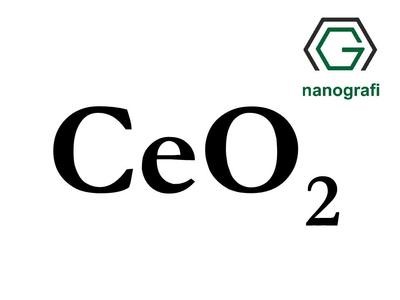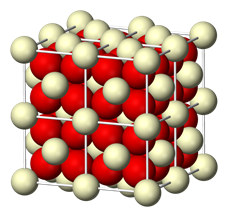What is Cerium Oxide?
Cerium (IV) oxide is an oxide of the
rare-earth metal cerium. It is a pale yellow-white powder with the chemical formula CeO
2. It is an important commercial product and an intermediate in the purification of the element from the ores. The distinctive property of this material is its reversible conversion to a nonstoichiometric oxide.
Cerium Oxide Nanoparticles/Nanopowder and Their Properties and Usage

Cerium, which is the first element in the lanthanide group with 4f electrons, has attracted much attention from researchers in physics, chemistry, biology and materials science. When combined with oxygen in a nanoparticle/nanopowder formulation, Cerium Oxide adopts a fluorite crystalline structure that emerges as a fascinating material. This cerium oxide nanoparticle/nanopowder has been used prolifically in various engineering and biological applications, such as solid-oxide fuel cells, high-temperature oxidation protection materials, catalytic materials, solar cells and potential pharmacological agents. Although Cerium Oxide Nanoparticles/Nanopowder can be useful in various properties and applications, the main application of Cerium Oxide is in the field of catalysis In recent years, Cerium Oxide Nanoparticle/Nanopowder and Cerium Oxide Nanoparticles/Nanopowder-containing materials have come under intense scrutiny as catalysts and as structural and electronic promoters of heterogeneous catalytic reactions. In industry, Cerium Oxide Nanoparticles/Nanopowder have been most widely used as an active component in processes such as three-way catalysts for automobile exhaust-gas treatments, oxidative coupling of methane and water-gas shift reaction. Recently, Cerium Oxide Nanoparticles/Nanopowder have been reported to have multienzyme, including superoxide oxidase, catalase and oxidase, mimetic properties, and has emerged as a fascinating and lucrative material in biological fields such as in bioanalysis, biomedicine and drug delivery. Cerium Oxide nanoparticles/nanopowder is an excellent oxidation resistant material. Because of this property of Cerium Oxide Nanoparticles/Nanopowder, they are used in oxidation resistant coatings, oxygen sensors, and oxygen pumps. Cerium Oxide Nanoparticles/Nanopowder are good Infrared absorbent. They are used in heat resistant alloy coatings and coatings for infrared filters.
Technical Properties of Our Cerium Oxide (CeO2) Nanoparticles/Nanopowder, 8-28 nm, Purity 99.975% Product
| Purity % | 99.975 |
| Color | light yellow |
| AVERAGE PARTICLE SIZE (nm): | 8.0-28.0 |
| SPECIFIC SURFACE AREA (m2/g): | 35-55 |
| Bulk Density (g/cm3) | 0.95 |
| True Density (g/cm3) | 7,2 |
You may order Cerium Oxide (CeO2) Nanoparticles/Nanopowder, 8-28nm, Purity 99.975% from the link below:
Technical Properties of our Cerium Oxide (CeO2) Micron Powder (White), 325 mesh, 99.99 % Product
| PURITY | Min. 99.99 % |
| |
| PARTICLE SIZE | 325 mesh |
| CAS | 1306-38-3 |
| DENSITY | 686 G/Cm³ |
| BOILING POINT | 3468 °C |
| MELTING POINT | 2600 °C |
| MOHS HARDNESS @ 20ºC | 6 |
| COEFF. OF EXPANSION @ 20ºC | 8 x 10 ⁸ |
| ELECTRIC RESISTIVITY | 0.218 Microhm-1 |
| CRYSTAL STRUCTURE | Cubic, Face Centered |
| FORM | Powder |
| COMPOSITION |
Ce- 81.4, O- 18.6
|
You may order Cerium Oxide (CeO2) Micron Powder (White), 325 mesh, 99.99 %from the link below:


Comments
Post a Comment